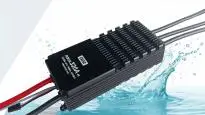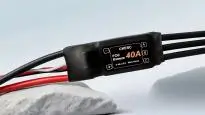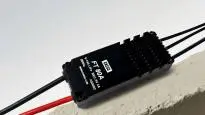I. Micro Unmanned Aircraft Systems (Maximum Takeoff Weight ≤ 0.25 kg)
Core Specifications: Empty weight under 250 grams, maximum flight altitude 50 meters, level flight speed ≤40 kilometers per hour, flight endurance typically under 30 minutes.
Practical application:
- Personal leisure and children's toys, easy to operate and no license required.
- Short-range entry-level aerial photography, such as filming family gatherings and small events.
- Indoor flight experiences and scientific research experiments, featuring representative models such as the DJI Mini series and Harvard University's RoboBee X-Wing.
II. Light Unmanned Aircraft (0.25 kg < Maximum Takeoff Weight ≤ 7 kg)
Core Specifications: Highly portable, 30-50 minute flight time, with some models featuring 4K video recording and basic obstacle avoidance capabilities.
Practical application:
- Professional aerial photography services covering wedding photography, real estate showcases, news coverage, and other scenarios.
- Agricultural plant protection and small-scale infrastructure inspections, such as farmland weeding and low-voltage line patrols.
- Short-distance last-mile logistics distribution, tailored for urban “last-mile” small-package delivery.
III. Small Unmanned Aircraft Systems (7 kg < Maximum Takeoff Weight ≤ 25 kg)
Core Parameters: Exceptional wind resistance, capable of carrying professional payloads such as multispectral sensors and LiDAR, with an endurance exceeding 1 hour.
Practical application:
- High-precision surveying and engineering modeling, such as highway alignment selection and construction monitoring.
- In-depth inspections of large-scale facilities such as power lines and oil pipelines achieve defect identification accuracy exceeding 95%.
- Precision agriculture operations and environmental monitoring, such as crop growth analysis and regional pollution detection.
IV. Medium-sized UAVs (25 kg < maximum takeoff weight ≤ 150 kg)
Core Parameters: Requires specialized transport due to large volume, offers flight endurance of several hours, supports beyond-visual-line-of-sight (BVLOS) flight, and accommodates heavy payloads.
Practical application:
- Medium-to-long-distance logistics transportation, such as delivering supplies to mountainous regions and islands.
- Large-scale agricultural and forestry plant protection and forest fire prevention monitoring, with extensive coverage per operation.
- Wide-area security patrol and emergency communication relay, such as border control and post-disaster signal assurance.
V. Large Unmanned Aircraft Systems (Maximum Takeoff Weight > 150 kg)
Core Parameters: Comparable to small manned aircraft, with flight endurance reaching tens of hours, featuring intercontinental flight capability and heavy payload capacity.
Practical application:
- Intercontinental-level large-scale cargo transport and long-distance passenger services, such as “air taxi” commuting.
- High-altitude, long-endurance meteorological observation and scientific research, such as atmospheric data collection and ocean monitoring.
- Specialized industrial operations and military-to-civilian conversion missions, with representative models including the “Double Scorpion” series and the Airbus Zephyr solar-powered unmanned aerial vehicle.
VI. eVTOL (Electric Vertical Takeoff and Landing Aircraft)
Core Attributes: Classified as a large-scale unmanned aerial vehicle (UAV), powered by electric propulsion, capable of vertical takeoff and landing without requiring a runway, and tailored for core low-altitude economic applications.
Practical application:
- Urban Air Mobility (UAM), such as the “air taxis” piloted in Shenzhen and Guangzhou, enables cross-city commuting within 30 minutes.
- Emergency rescue and medical evacuation: Arrive at disaster sites within 30 minutes to deliver supplies or transport casualties.
- Cross-border logistics and low-altitude cultural tourism, such as Hong Kong-Macao cross-border freight and scenic aerial sightseeing routes.
From centimeter-scale micro drones to ton-class eVTOLs, unmanned aerial vehicles of all sizes are penetrating multiple sectors through scenario-specific adaptation. Driven by policy and technological evolution, they will become the core engine of the low-altitude economy, reshaping the logic of production and living spaces.





